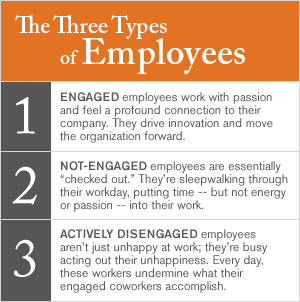As described in the first article in this series, many projects fail because organizations put their practices before their people. This happens when organizations try to make an employee's human nature and emotional makeup fit their processes and policies. This traditional approach to project management emphasizes developing complex guidelines to manage projects across all phases -- from implementing phase reviews, performance metrics, and project steering committees to creating risk management dashboards.
Are team members motivated to deliver results?
When this happens, project managers become little more than bureaucrats who manage paperwork rather than projects, and teams may lose sight of the project's strategic purpose and objectives. The accumulation of meetings, committees, and forms creates more stress and workload, and it rarely improves outcomes.
In these environments, project managers, project teams, and stakeholders can become bound by processes that neglect fundamental questions, including:
-
Do project team members know exactly what is expected of them? Are they clear about their roles?
-
Are team members motivated to deliver results? Are they engaged with the organization and the team?
-
Do team members feel like their opinions are heard and that they can safely express their opinions?
-
Is there someone who motivates team members and recognizes their good work?
-
Do team members get along well? Do they care about each other, about quality, and about meeting the project's objectives?
-
Do team members treat the project stakeholders with fairness, respect, and trust?
-
Do stakeholders trust the project team? Do they feel that the team delivers?
-
Are stakeholders engaged with the project team? Are they passionate about the project and the team?
-
Would stakeholders keep using the project team's services if they could opt out? How likely are they to recommend the team and its members for other projects?
Traditional project management does not give enough attention to these elements because they are more difficult to manage with processes or because they're dismissed as "soft issues." Yet they are crucial to a project's success.
Emotions count
Years ago, Gallup reported a key finding about human nature in the workplace: People have emotional needs, and if they are not attended to, the result is subpar performance and increased turnover. Even the best processes and systems are inefficient if the people who run them aren't emotionally invested in the outcome. To drive performance, organizations must engage their employees.

Engaged workers dedicate their energy to achieving their organization's objectives. They are committed, enthusiastic, loyal, and excited. Engaged employees are more productive, more profitable, more customer-focused, safer, and more likely to withstand temptations to leave the organization. They are also more engaging because engaged employees are more likely to elicit engagement from key stakeholders, such as their internal and external customers. A study by Gallup revealed that companies that applied best-practice principles optimizing employee and customer engagement at the workgroup level, for example, outperformed their five largest peers by 26% in gross margin and 85% in sales growth.
Three key principles
Project managers know that their work is constrained by scope, time, and cost. Project teams are expected to deliver on all three counts and to adjust one when the others change. Successful project teams, however, are able to overcome the limits of these constraints. That happens when project managers successfully manage people and processes by understanding and putting into practice three key principles:
1. Project team member engagement. Just like any workgroup, a project team needs to be emotionally engaged to achieve its objectives efficiently and effectively.
2. Stakeholder engagement. A project team must have strong emotional bonds and partnerships with its stakeholders to succeed.
3. Optimizing performance. Highly engaged teams with highly engaged stakeholders are much more likely to achieve objectives within scope and budget and with high quality.
A behavior-based approach to project management works toward optimizing performance by actively measuring, managing, and aligning project team member engagement and stakeholder engagement.
Historically, businesses have overlooked or ignored emotional drivers.
Project team member engagement measures the level of commitment, involvement, and motivation within a team. Engagement has a strong impact on project performance on key deliverables such as scope, cost, quality, and timeliness. Engaged team members:
-
know what to do and are able to do it. Teams cannot function effectively if team members lack clarity about what is expected of them. Team members need to know how what they do fits in the overall project and the appropriate tools to do their work.
-
contribute meaningfully to the project. Engaged team members have the opportunity every day to use their strengths to do what they do best. They also have a project manager who cares about them and who provides coaching and recognition.
-
work together as a team. Engaged team members are motivated and feel connected to the team's broader goals. They work together to create high-quality outcomes and develop trusting relationships.
-
learn and grow. To be engaged, team members need feedback about their progress individually and as a team. They also need opportunities to develop in areas related to their role or in areas that will prepare them for future roles or jobs.
Stakeholder engagement describes the health of internal or external customer relationships. A stakeholder is often thought of as a sponsor, a project manager, an internal or external customer, or a project resource. But a stakeholder can be any person, team, or organization that has an interest in the successful completion of a project. Consistent with other Gallup findings on customer engagement, engaged stakeholders:
-
have Confidence that the project team is completely trustworthy and always keeps its promises.
-
know that the project team stands firmly behind its work and treats its stakeholders fairly and with Integrity.
-
feel Pride, which reflects the benefits of associating with the project team and its products or services.
-
have Passion for the project and project team. This is the ultimate expression of a strong emotional bond and reflects the belief that the project and team are a perfect fit for achieving the stakeholders' goals.
Optimized performance results from managing the engagement of project team members and the engagement of stakeholders. To increase the emotional alignment between teams and stakeholders, organizations should ensure that project team member engagement and stakeholder engagement are consistently monitored and improved using Gallup's employee and customer engagement measures.
If a team's engagement score is low on the recognition indicator, for example, then the project manager and team should work together on a plan to increase recognition. If a stakeholder engagement score is low on the Confidence indicator, the team should consult with the stakeholders to identify the cause and devise a plan to regain their trust.
Implementing behavior-based project management
To implement a behavior-based project management approach, Gallup recommends intervention at the organizational, project management office, and project team levels for optimum impact and results. Sustaining improvement in the relationship between team members and stakeholders requires disciplined action at the project team level coupled with an organization-wide commitment to changing how team members are positioned in roles, how they are rewarded and recognized, and most importantly, how they are managed.
Emotions play an important role in all these interactions, and the emotional engagement of the project team members helps them deliver projects that are on time, within budget, and within scope. Project team member engagement affects how stakeholder requirements are achieved; it also affects the strength of team members' relationships with each other and with their stakeholders -- which in turn stimulates performance.
Historically, businesses have overlooked or ignored these emotional drivers. But that neglect comes at a cost, and it's reflected in the project team's performance. Understanding and accepting that people are strongly influenced by emotion can help project managers optimize their teams' performance. It's far more effective to fit practices to people -- and success is far more likely as a result.
